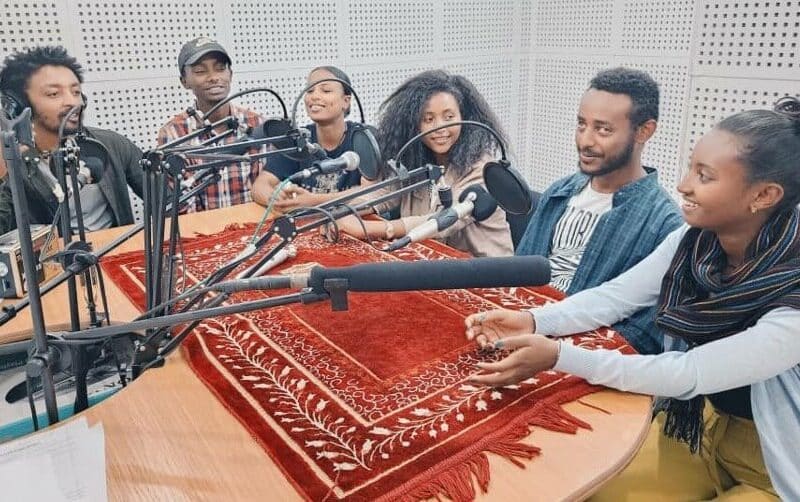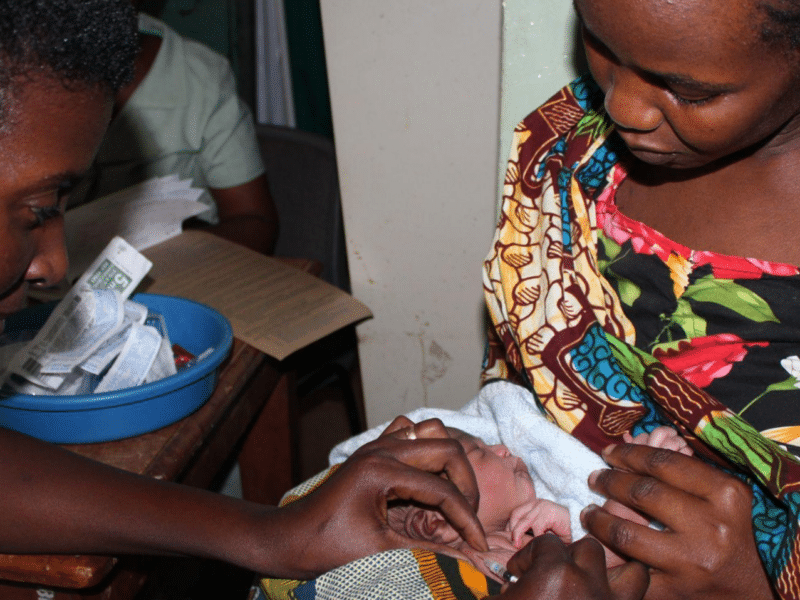Najama Khatun is just 12 years old. But at a recent meeting in her hometown in Madhesh province in Nepal, she spoke powerfully to many more than twice her age about the scourge of child, early and forced marriage in her community and the importance of educating girls to “make them self-reliant.”
“You need to save the future of your daughters by educating them,” she told those assembled. “I urge mothers not to subject their children to the same fate they have experienced. Please do not marry them off early.”
Najama got involved in the issue of child marriage when a representative from the local ward office came to her school to talk about it with her classmates and mothers of her classmates, including her own. She now chairs a child club and represents it on the Ward Child Rights Committee (WCRC) in Loharpatti, Mahottari district.
Marriage under the age of 20 is illegal in Nepal.
The Johns Hopkins Center for Communication Programs-led Breakthrough ACTION Nepal’s Reducing Child Early and Forced Marriage (R-CEFM) project provides technical support to local municipal governments to strengthen their capacity to reduce child marriage. As part of the work, they helped reestablish local child rights committees, which collaborate with child clubs.
During the Loharpatti club’s regular monthly meetings, Najama and her fellow members remain vigilant about and raise awareness of child marriage issues. If the students sense suspicious activities like girls suddenly dropping out of school or if parents are seen making wedding plans for their young daughters, they informally discuss them and decide on the necessary action, which may involve informing the ward office or WCRC members.
Najama, her child club team, and the ward office face several challenges. Their primary task is persuading parents to avoid marrying off their children at a young age. “They understand the risk of child marriage, but they say that if they don’t marry off their daughters early, they might run away with someone,” Najama says. “But if they marry them off early, it … ruins their daughter’s future.”
While parents have begun to show understanding of the negative impact of early marriage, Najama believes more must be done. “Understanding is not enough. We must intensify our campaign to change their behavior,” says Najama, sounding so much wiser than her years. “We need to keep reminding them consistently.”
Najama is one among many Nepali children working with their senior community leadership to save themselves and their peers from being married early. “Parents fear that their daughter might elope,” says Punam Pari Mahato, member of another child club in Rautahat. “Then they would lose all prestige, honor, and whatever name they have in society. Girls in our village are really left behind without education and forced into early marriages. [But], if we are educated enough, we can pursue careers and take care of our parents like boys.”
Says Priya Kumari Pandey, another club member: “They even say, ‘What will you achieve with education? After all these efforts, you will end up doing nothing but cooking and taking care of the family in the future.’ This attitude needs to change.”
Having local government provide leadership on reducing child marriage has improved their relationship with the child clubs and community members.
Kaushal Kishor Jha is an 11th grader who leads a child club in a neighboring district. “When the ward office approached and mobilized us through the child club for the cause of ending child marriage, I became very positive about working with them,” he says.
According to Kaushal, through various initiatives, from dramas to awareness-raising campaigns, they have made significant efforts to stop child marriage. “Child marriage used to happen openly before these initiatives. Now, no one dares to do so.” But he says: “We need to do more to completely stop it.”
Najama says that efforts are already making a difference. She says she has noticed that the number of girls attending school is increasing, which is a positive sign.
“I’ve also personally benefited,” she says. “Before joining this movement, there was discrimination in my family, favoring my brother over me. Now, we’re treated equally. My parents also used to say they’d marry me off after I finished 10th grade, but now they encourage me to pursue my education and follow my dreams.
“I believe this should happen in every family.”
A version of this post originally appeared on the Breakthrough ACTION website.





